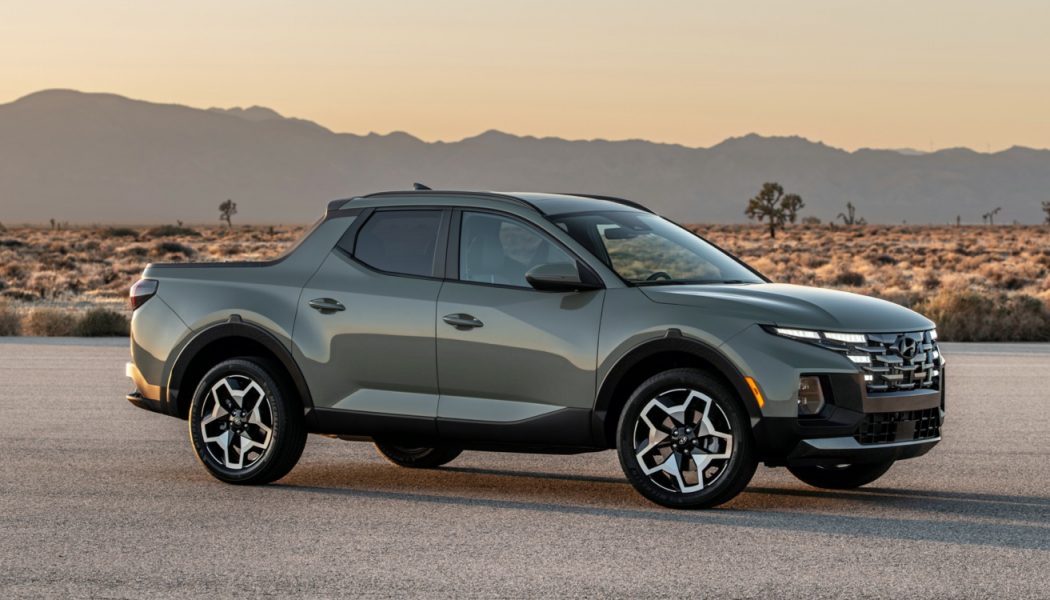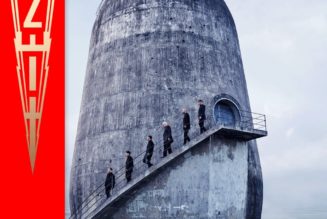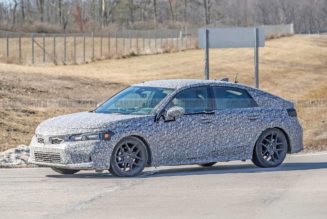The former shares its unibody construction method with the Santa Cruz, while the latter is the archetypal American midsize pickup. While the Hyundai and Honda are limited to one body style and one bed configuration, the Chevy is available in either smaller Extended Cab or larger Crew Cab body styles, the latter of which also offers short- and long-bed configurations. To limit confusion and compare the most similar configurations, we are mainly looking at the dimensions of a Colorado Crew Cab with a short box.
The Long and the Short of It
At 195.7 inches long, the 2022 Hyundai Santa Cruz casts a shadow 14.5 inches and 17.0 inches shorter than those of the Ridgeline and Colorado Crew Cab, respectively. The Hyundai’s 66.7-inch height is also down 3.6 and 4.1 inches to those of the all- and four-wheel-drive Honda and Chevy. In other words, the Santa Cruz’s overall length and height are within a few inches of those of the 193.3-inch long and 64.2-inch tall Subaru Baja pickup of the 2000s (not to mention a number of today’s midsize SUVs).
The Santa Cruz’s smaller size ought to make it more maneuverable in urban environments than the larger Ridgeline and Colorado. Predictably, the little Hyundai pickup sacrifices bed space as a result. With a maximum length of 52.1 inches, the Santa Cruz’s rear box gives up 9.6 inches of length to the Colorado Crew Cab’s standard bed, and 11.9 inches to that of the Ridgeline. Opt for the Colorado Crew Cab’s available long bed and the delta swings to approximately 21.9 inches. Like the Honda, though, the Hyundai packs a trick locking-storage area under its bed floor for additional cargo space and security.
Truck Stuff
A big box is only one part of the truck equation, though. Presumably, Santa Cruz buyers would be happy to trade some bed space for more city-friendly exterior dimensions. Will these same consumers willingly sacrifice payload and towing capacity for the Hyundai’s size convenience?
The Santa Cruz’s maximum towing capacity of 5,000 pounds (when equipped with the optional turbocharged 2.5-liter four-cylinder engine) manages to match the larger Ridgeline’s figure. And as you might expect, it does fall short (by 2,000-2,700 pounds) of the body-on-frame Colorado’s maximum figure when equipped with either its 3.6-liter V-6 engine or turbo-diesel 2.8-liter I-4.
Forgo the Santa Cruz’s turbocharged engine option, and stick with its standard naturally aspirated four-cylinder engine, and you’re looking at a maximum towing capacity of 3,500 pounds—the same as a base four-cylinder Colorado. Given its diminutive size, the Santa Cruz’s towing capacity ought to satiate the needs of a large number of buyers. That said, some buyers will simply need more capability than this Hyundai offers, and in those instances, they might have to turn to larger competitors such as the six-cylinder or turbo-diesel Colorado.
Hyundai claims the Santa Cruz’s maximum payload capacity tops 1,700 pounds. For reference, the Ridgeline and Colorado offer maximum payload capacities of 1,583 and 1,550 pounds, respectively. The four-cylinder Colorado Crew Cab short bed, meanwhile, offers a 1,400-pound payload.
Compact trucks are coming back to America, and we can think of plenty of reasons to choose the small and stylish Santa Cruz over larger midsize pickups. Given its smaller stature, the Hyundai predictably can’t match its larger competitors’ maximum capabilities or bed volume—although many of the differences aren’t as stark as you might initially have thought. Buyers will simply need to decide what’s most important to them.










